Protecting the Health of the Origin of Life: How to Solve the Problem of Decreasing Human Fertility
At present, the global average infertility rate is around 10% -15%, while in China it is about 15%. There are approximately 12 to 15 million infertile couples in China, with a high miscarriage rate of 10% among the naturally pregnant population. In addition, the birth defect rate of infants in China is 5.6%, with approximately 900000 new cases added annually.
At the same time, the aging phenomenon in the world is severe, and China is no exception. In 2015, the total fertility rate of China's population was about 1.6, far lower than the generational replacement level of 2.1. The introduction of the comprehensive second child policy has not significantly alleviated this situation. In 2018, the population aged 65 and above reached 167 million. According to this trend, by 2050, the elderly population in China is expected to account for 35% of the total population, far higher than the world average of 22% of the elderly population. Data shows that from 2015 to 2025, it is predicted that the size of the population of childbearing age will continue to decline.

Image sourced from the internet
On November 21, 2019, the "National Medium and Long Term Plan to Actively Respond to Population Aging" was officially released to the public. The Plan points out that by 2022, a preliminary institutional framework will be established to actively respond to population aging, and basic pension insurance and basic medical insurance will basically achieve full coverage of legal personnel.
By 2035, the institutional arrangements for actively addressing population aging will be more scientific and effective. Social wealth reserves will enter the ranks of high-income countries, major health indicators will enter the ranks of high-income countries, and the Chinese characteristic elderly care service system will be mature and finalized. All elderly people will enjoy basic elderly care services, and an elderly friendly society will be built as a whole.
By the middle of this century, the institutional arrangements for responding to population aging that are suitable for socialist modernization and strong countries will be mature and complete.
Development and bottlenecks of assisted reproductive technology
On April 15, 2019, doctors in the Third Hospital of Peking University (hereinafter referred to as the Third Hospital of Peking University) were busy as usual: Zheng Mengzhu, the first test tube baby in Chinese Mainland, was about to give birth. With a crisp cry, a 3850g baby boy was born, just as his mother did. As the "second generation of test tube babies", his birth attracted everyone's attention.

Professor Zhang Lizhu and Zheng Mengzhu, the mothers of Chinese IVF, are sourced from the internet
Time flies back 31 years ago, on March 10, 1988, Zheng Mengzhu was born at the Reproductive Medicine Center of the Third Hospital of Beijing Medical University. Her birth marked a new journey for assisted reproductive technology in China, and the birth of the "second generation of in vitro babies" further confirms the safety of assisted reproductive technology in China. Since 2005, the overall service volume of Assisted Reproductive Technology (ART) in China has rapidly increased, far exceeding the number of ART cycles provided by the Centers for Disease Control and Prevention in the United States during the same period.
In the past three years, the annual outpatient volume of Beijing Medical Third Hospital has been around 600000, and many couples come to Beijing for medical treatment due to fertility issues. Qiao Jie, the director of the Third Hospital of Beijing Medical University, stated that most of these patients are middle-aged and young people of childbearing age, who are the backbone of families and society. Through media dissemination, assisted reproductive technology and its derivatives are increasingly receiving widespread attention from the public, and many people even place all their hopes for elderly childbirth on frozen eggs.
Eggs are inevitably damaged during the freezing process, including changes in temperature, treatment of frozen culture medium, and the thawing process may also damage the cell structure of the egg.
Assisted reproductive technology provides hope for many families to conceive new lives, but it also faces challenges - such as an average success rate of only about 30% per treatment cycle. At present, clinical researchers are still continuously exploring methods to improve the success rate of assisted reproduction, but in any case, "advanced age" is still the inevitable and limiting factor in the success rate of assisted reproduction. So, Academician Qiao Jie emphasized: "The best way to have a healthy baby smoothly is for couples of childbearing age to prepare for pregnancy scientifically between the ages of 25 and 28, and try not to exceed the age of 35. Diseases are sometimes inevitable, but life planning can be done in advance, and work and life should be balanced as much as possible.
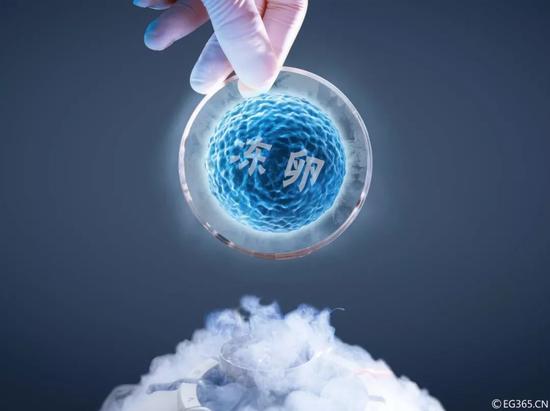
Image sourced from the internet
Continuously solving difficulties in gamete and embryonic development process
Humans and other species originated from unicellular organism. As evolution progresses, the genetic differences between humans and other organisms become increasingly significant, gradually exhibiting their own unique traits and maintaining them. The transmission of this unique feature depends on the germ cell. In the process of nurturing new life, seeds (oocyte quality, sperm quality), land (endometrium), and environment (local and overall body conditions) are key factors, with oocyte quality and sperm quality accounting for about 70% of the factors. However, at present, we still have little knowledge about the entire process from gametogenesis to the formation of new individuals and their redevelopment after fertilization. Therefore, continuously exploring and analyzing the regulatory laws of human gametic embryo development is an important part of understanding ourselves and attempting to improve the success rate of assisted reproduction.
With the support of high-throughput single cell sequencing and other technologies, in recent years, Qiao Jie's team, together with Professor Xiaoliang Sunney Xie and Professor Tang Fujiu of Peking University, has continuously conducted systematic research on the genesis, development and maturation of germ cell, revealing the genomic characteristics of human early embryonic development, implantation process, fetal germ cell genesis, sperm, follicle maturation and other key development stages DNA methylation Reprogramming and its regulation on gene expression can enable every gene and base in sperm and egg cell to trace to the parent source, which lays a foundation for linkage analysis of genetic disease diagnosis.
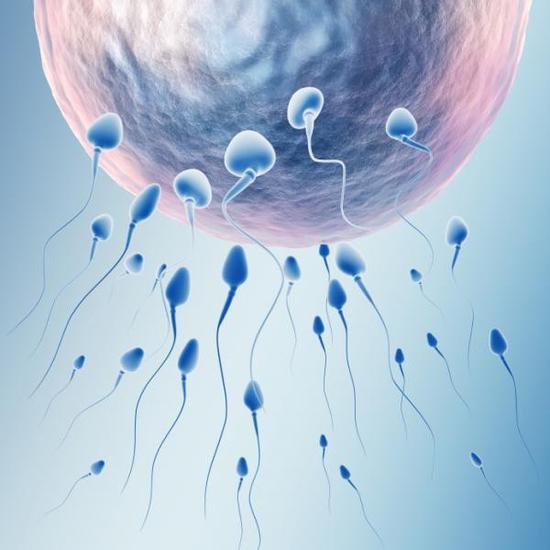
Image sourced from the internet
"In clinical practice, implantation failure is one of the important factors leading to early abortion." Academician Qiao Jie said that previously, human embryos in the early post implantation stage after natural pregnancy could not be obtained, and model organism such as rodent embryos or monkey embryos were used instead of research, which could not accurately reflect the true situation of human molecular regulation and other laws.
The first step of embryo implantation is that under the action of various hormones, growth factors and chemokines, the embryo nourishes the ectoderm, adheres to the endometrial epithelial cell adhesion, and then invades the endometrium. Afterwards, after implantation, the trophoblast cells further invade and differentiate to maintain pregnancy and prevent miscarriage. Simply put, this process is a 'black box'.
On August 21, 2019, Professor Qiao Jie's research team and Professor Tang Fujiu's research team published a paper entitled "Reconstructing Human Embryo Implantation Process by Using Single Cell transcriptome and DNA methylation Map" online in Nature magazine, which successfully cracked this "black box". They used an in vitro simulation of human embryo implantation culture system, combined with high-precision single cell multi omics sequencing technology, for the first time expounded the dynamic changes of gene expression regulation network and DNA methylation in the process of human embryo implantation, and analyzed the molecular regulation mechanism of embryonic development around the implantation stage.
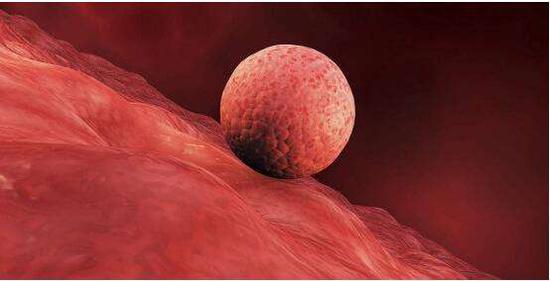
Embryo implantation, sourced from the network
With the division of the zygote, the embryonic cells gradually appear the differentiation of fate, forming a blastocyst with three cell types. Among them, the pre embryonic somatic cell mainly composed of the cells of the upper embryonic layer rapidly proliferate and migrate, forming three embryonic layers inside and outside. The fate of the pre embryonic somatic cell is the key to the development of the embryo. If the induction and differentiation of the embryonic layer are abnormal, it will lead to adverse pregnancy and fetal malformation. During this process, some epigenetic changes should be given special attention to their impact on adult diseases. Many adult related diseases are related to nourishing the ectoderm and the inner cell mass. However, the ability to study human embryos is limited, so the research on different model animals is very important.
During the early development of mammals, cell migration, proliferation, and differentiation are crucial for the formation of embryonic cells and the establishment of embryonic patterns. Taking mice as an example, the number of cells in the embryo on the 6.5th day after fertilization is about 660, and by the 7.5th day, it reaches 16000 cells, an increase of 27 times the number of cells. What exactly happened to this process? With the rapid proliferation of cells, the researchers tracked the migration of mesoderm cells from the primordium to the front of the embryo and the outside of the embryo by using specific markers that labeled mesoderm cells. When the localization of embryonic cell fate is established and how it is regulated by genetics and epigenetics is a major fundamental issue in developmental research, and related research has been ongoing.
In recent years, through single cell sequencing and other means, scientists have preliminarily analyzed the change characteristics of cell lineage in different embryonic layers of zebrafish, African claw frog and other model animals at the gastral stage. Studies in mice also show that the regionalization of embryonic cell lineage can be traced back to the cleavage stage, and the top control factors of this regulatory network are still unclear; In addition, whether the key determining factors of this process can be traced back to before the cleavage stage is also an important scientific issue that has not yet been resolved. At present, scientists have established effective experimental methods and technical routes, which can realize large-scale mining of candidate regulatory factors in the process of zygote formation, identify their decisive role in the fate regionalization of embryonic cells, and explore their mechanism of action, thus providing clues for answering this important scientific question.
It is also very difficult to study the development process of fetal primordial germ cell. In 2017, using single cell RNA sequencing technology, scientists analyzed more than 2000 fetal germ cell and somatic cell around the genital ridge, including male and female embryos and covering multiple development stages. This study found that female fetal germ cell experienced four stages: mitosis, retinoic acid signal transduction, pre meiosis and oogenesis; The male fetal germ cell experienced three stages: migration, mitosis and cell cycle arrest. The development process of human embryonic germ cell described in this study under normal physiological conditions in vivo will provide a roadmap for the diagnosis and treatment of germ cell related diseases (such as infertility and teratoma).
The atlas drawn through a series of studies shows that the DNA methylation of sperm and egg occurs two large-scale Reprogramming before implantation and in the fetal primordial germ cell stage - two large-scale Reprogramming of methylation in the life cycle. In this process, the methylation of imprinted genes is maintained during embryonic development, the original germ cell is erased, and the paternal and maternal imprints are re established respectively during sperm and egg maturation, and new allelic differential methylation regions and potential new imprinted genes are found; Repetitive sequence elements retain a large amount of methylation to maintain genomic stability; The contribution of DNA methylation of paternal and maternal sources to embryonic development may be different.
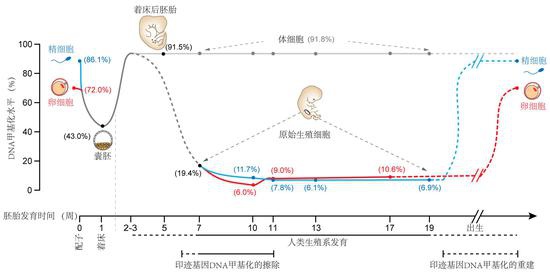
Recently, teams from the Institute of Zoology, Chinese Academy of Sciences, Kunming Institute of Zoology, and Kunming University of Technology have published groundbreaking research results back to back in the journal Science. The in vitro culture of crab eating monkey/macaque embryos lasted for more than 14 days and reached 20 days, thus successfully simulating the process of embryo implantation and gastrulation. The gastral movement is a milestone event after the blastocyst implantation. Lewis Wolpert, a famous British developmental biologist, once said: "The most important stage of life is not birth and marriage, or even death, but the gastral movement." The gastral movement is very conservative in evolution, and its mechanism is finely and rigorously regulated, which is the most fascinating process of developmental biology. The normal and orderly occurrence of intestinal motility is the basis for the formation of the three embryonic layers, providing a guarantee for the normal differentiation of subsequent organs. However, due to the limitations of research materials, experimental techniques, and animal ethics, people's understanding of gastrulation is still very limited. Among mammalian animals, there is relatively more research on the process of intestinal motility in mice, while there are many differences in the early embryonic development process between rodents and primates, and the two cannot be completely analogized.
The culture system, morphological identification, and single-cell sequencing analysis of crab eating monkey/macaque embryos cultured in vitro have confirmed that both in vitro and in vivo embryos have highly similar morphological and gene expression characteristics, and can reproduce multiple important biological events of in vivo embryos in vitro. This work has opened up a new research platform for exploring early embryonic development in primates, especially in the early implantation stage and gastrulation stage. Combined with cell tracing technology and single cell sequencing technology, this system will promote the research of primate early embryonic development and disease, promote the directional differentiation of embryonic stem cells, and promote the development of regenerative medicine and other related fields.

On November 23, 2018, the research group of Academician Meng Anming and Professor Tao Qinghua from Tsinghua University jointly published a report in the journal Science titled "The Mother Source Factor Huluwa Passes β- The paper 'Catenin determines the axis of vertebrate embryos' has attracted widespread attention. This study identified a new membrane protein, named "Huluwa, Hwa". Hwa is a maternal factor, which has been localized in the zygote of zebrafish and African claw frog. This feature led Huluwa to induce the formation of Spemann tissue only on one side of the embryo. Systematic genetics, embryology, and cell biology experiments have proved that it is Hwa since Spemann found the organizer, The determining factor behind the mother source that people are searching for.
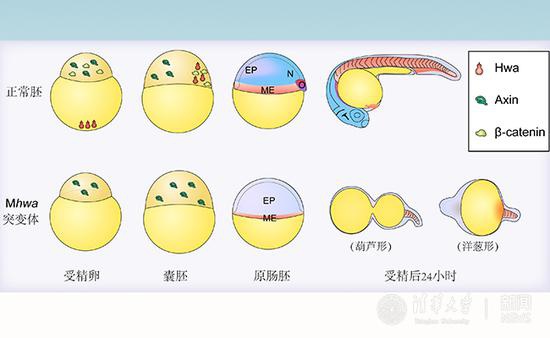
Image from Tsinghua University News Network in China
In the process of mechanism research, researchers are also constantly exploring new clinical technologies. Qiao Jie believes that the acquisition of immature eggs, in vitro maturation technology, new technologies to prevent damage to the fragile spindle of egg cells, and the development of cryoprotectants require the joint efforts of scientists in various fields.
How to avoid birth defects
At present, the global situation of birth defects is severe, and even in developed countries, the incidence of birth defects is 2% -3%. According to the 2012 China Birth Defect Prevention and Control Report, China adds about 900000 new birth defects every year, and birth defects have become the main cause of infant death and child disability.

Why do birth defects occur? Qiao Jie said that this could be caused by genetic factors such as chromosome aberration and gene mutation, as well as environmental exposure factors such as infection before and during pregnancy, radiation, teratogenic drugs, pregnant women's diabetes, or by the interaction of these two factors or other unknown reasons.
China has now formed a three-level prevention system for birth defects. Third level prevention refers to seeking treatment after birth, with limited therapeutic effects and high costs; Secondary prevention is mid-term induced abortion, but it is very painful for the mother; Primary prevention includes premarital and prenatal counseling, prenatal examinations, especially for families with genetic diseases or those who have already given birth to birth defects. Preimplantation genetic diagnosis is the best method of prevention from the source. At present, Professor Qiao Jie, Professor Xiaoliang Sunney Xie and Professor Tang Fujiu have created a new method of pre implantation genetic diagnosis, MARSALA. Once sequencing is completed, triple diagnosis of "single gene detection, chromosome identification and linkage analysis" can be achieved. At present, nearly 600 couples, including nearly 200 single gene diseases, have been diagnosed, and it is hoped that the development of more new technologies can benefit more families.
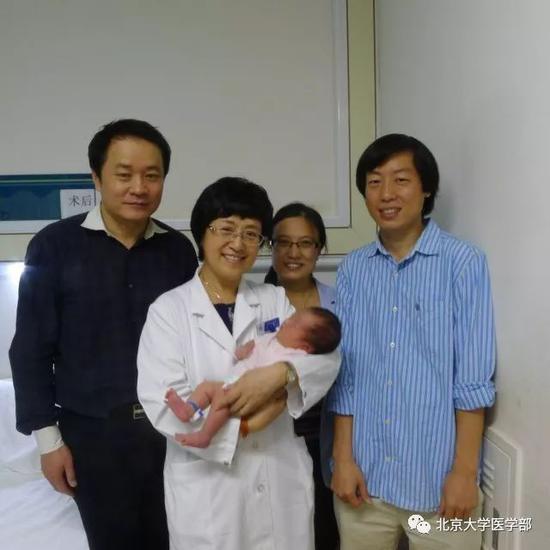
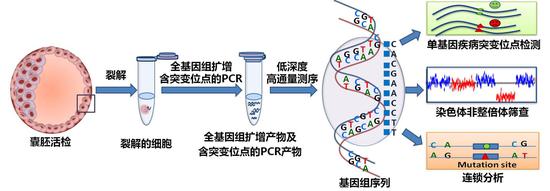
In 2018, the research results of the assisted reproductive technology series of the Third Hospital of Beijing Medical University, as the only representative of clinical technology that has changed people's livelihoods, were selected for the "Great Change - Celebrating the 40th Anniversary of Reform and Opening up" large-scale exhibition. The first MALBAC baby in the world and the first baby in Chinese Mainland, as the representative of assisted reproductive technology in the Third Hospital of Peking Medical College, are also the embodiment of the level of assisted reproductive technology in China. They were exhibited in the fourth exhibition area - historical changes.
Please specify source if reproducedProtecting the Health of the Origin of Life: How to Solve the Problem of Decreasing Human Fertility | SCISOON

